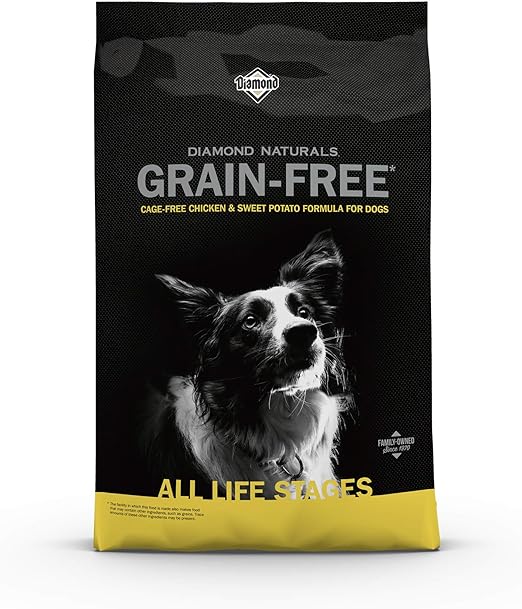You’ve always admired those long-nosed dogs with their graceful profiles and unique looks. Breeds like dachshunds, greyhounds, and borzois capture your imagination with their slender bodies and proud bearing. What is it about these elegant pups that makes people stop and stare? Well, wonder no more! This guide will explore several fascinating breeds of long nose dogs, from their history and temperaments to tips on providing the best care for these captivating canines. Get ready to be charmed as we uncover the traits and quirks behind some of the most popular and eye-catching dogs around. You’ll get the 101 on everything from sighthounds to scenthounds so you can better understand what makes these pooches so special. Let’s dive in and satisfy your curiosity about the world of long snouts and lovable personalities! long nose dog
What Makes a Long Nose Dog Breed Unique?
Long nose dog breeds, also known as dolichocephalic breeds, have distinctive elongated snouts and skulls. Their unusual proportions give them a charming, quirky appearance and certain behavioral qualities that set them apart.
Distinctive Physical Features
With their elongated muzzles and skulls, long nose dogs have a very distinctive look. Their unusual proportions can make them appear almost comical or cartoonish. Popular long nose breeds include Greyhounds, Salukis, Borzois, Afghan Hounds and Collies. These breeds are also typically tall and slender. Their long limbs and lithe bodies are well suited for running and chasing.
Keen Sense of Smell
Long nose dogs have an exceptional sense of smell due to their large nasal cavities. They can pick up scents from far away and track them back to the source. Many long nose breeds were originally used as hunting companions to track and chase prey. Today, some are still employed as scent hounds for tracking. Their keen sense of smell also means they can be prone to distraction by intriguing scents during training or walks.
Independent and Energetic Nature
Long nose dog breeds tend to be independent, energetic and enjoy open spaces where they can run freely. They require daily exercise and mental stimulation to prevent boredom and restlessness. While affectionate and friendly towards their owners, some long nose breeds can be aloof or wary of strangers and other pets due to their hunting instincts. Early socialization and consistent, positive training is important for these breeds.
Grooming Requirements
The coat of a long nose dog is usually short to medium in length, requiring only occasional brushing to remove loose hair. Bathing should only be done when necessary using a mild dog shampoo to avoid drying out their skin. Their long ears will need to be checked regularly for any signs of infection or irritation and cleaned if needed. Nails should also be trimmed if they get too long. Routine teeth brushing and dental care is important for these breeds to prevent tooth or gum disease.
With their distinctive looks and charming personalities, long nose dog breeds make for wonderfully quirky and devoted companions. While they may require patience and an experienced owner, they are playful, energetic and endearing dogs.
Top 4 Most Popular Long Nose Dog Breeds
Long nose dog breeds, also known as dolichocephalic breeds, are instantly recognizable by their distinctive snouts. These playful pups are energetic, charming and make loyal companions. Some of the most well-known long nosed breeds include:
1.Greyhound: The sleek and graceful Greyhound is one of the oldest known dog breeds. These retired racing dogs make docile and loving pets. They have a calm temperament and enjoy lounging around, but also need regular exercise.
2.Borzoi: Resembling a small horse, the Borzoi is an elegant and dignified breed. They were originally bred as hunting dogs in Russia to chase down wolves and hares. Borzois tend to be independent, but are playful, gentle and bond very closely with their owners.
3.Saluki: Hailing from the Middle East, the Saluki is one of the oldest domesticated dogs. They were prized by Egyptian nobility and used for hunting gazelles. Salukis have a reserved yet playful temperament, and need patient, experienced owners. They require daily exercise and grooming to keep their silky coats from matting.
4.Afghan Hound:
With their glamorous, flowing coats and aloof demeanor, Afghan Hounds were originally bred as hunting dogs in the mountains of Afghanistan. They can be challenging to train and groom, but are playful and entertaining. Afghan Hounds need daily exercise and attention, or they may become bored and develop behavioral issues.
Long Nose Dog Breed Personality Traits and Temperament
Long nose dog breeds, also known as sighthounds, are typically gentle, playful and affectionate companions. Their graceful appearance and regal bearing often gives the impression that they are aloof or snobby, but in reality, many long nose breeds form very close bonds with their owners and love spending time with the people in their lives.
Friendly and Playful
Breeds like Greyhounds, Whippets, Borzois and Salukis tend to be very friendly towards new people and playful with children and other dogs. They usually have an easygoing temperament and are quite sensitive and empathetic. However, some long nose dogs can be more reserved towards strangers due to their natural instinct to chase, so early positive socialization is important.
Independent and Cat-Friendly
While sighthounds do enjoy quality time with their owners, they are often described as independent dogs that value alone time. They tend to nap frequently during the day and night. Many long nose breeds also get along well with cats and other small pets, especially if raised together from an early age. Their prey drive varies between breeds and individuals, so proper introduction at a young age is recommended.
Quiet and Undemanding
In general, long nose dog breeds do not tend to be excessive barkers. They usually only vocalize to alert their owners to something unusual. Sighthounds also do not require constant attention and stimulation. They are often content to relax quietly when their owners are home, as long as they get plenty of exercise and play.
Long nose dog breeds can make wonderful companions for owners looking for an elegant, undemanding and cat-friendly canine friend. While they require daily walks or runs in a fenced area, sighthounds are usually quite low maintenance otherwise, and are perfectly content in smaller living spaces. Their sweet, gentle temperament and playful nature endear them to many dog lovers.
Caring for Your Long Nose Dog’s Health and Grooming Needs
Long nose dogs, like Greyhounds, Borzois, and Afghan Hounds, require regular grooming and health care to keep them happy and comfortable. Their distinctive facial features and long fur need extra attention.
Grooming
With their long fur and slender builds, frequent brushing and occasional bathing are musts. Aim for brushing 2-3 times a week to prevent mats and tangles. Bathing every 4-6 weeks, or as needed, will keep their coat clean and skin healthy. Be very gentle when brushing and bathing, as their lean bodies can be sensitive.
Trim your long nose dog’s nails regularly since their paws are so delicate. Check and wipe their ears weekly, as ear infections are common in breeds with drooping ears. Brush their teeth several times a week to prevent dental issues and bad breath.
Exercise
While greyhounds and similar breeds don’t require intense exercise, they still need daily activity and interaction. Aim for 2-3 walks per day, for 15-30 minutes. Let them stretch their long legs at a dog park a few times a week. Puzzle toys and play sessions will keep them mentally stimulated when indoors.
Health Issues
Some health issues to be aware of include:
- Bloat: Their deep chests mean they can be prone to gastric dilatation volvulus (GDV), also known as bloat. Feed them 2-3 smaller meals per day and avoid intense exercise after eating.
- Skin problems: Long noses and little body fat can lead to dry, itchy skin. Use a humidifier, fish oil supplements, and moisturizing shampoo to keep their skin hydrated.
- Dental disease: Their narrow jaws mean teeth can be crowded, leading to dental problems. Brush teeth regularly and schedule dental cleanings with your vet.
- Digestive troubles: Sensitive stomachs are common. Choose a high-quality dog food for sensitive digestion and avoid treats with artificial additives.
- Cancer: Unfortunately, many long nose breeds have higher cancer rates. Regular vet checkups, especially as they age, are extremely important for early detection.
By providing your charming long nose dog with proper care, grooming, exercise, and nutrition, you’ll help keep them happy and healthy for many years. Be proactive about their unique needs and you’ll have a loyal, loving companion by your side.
Training Tips for Long Nose Dog Breeds
Owning a long nose dog breed comes with some unique training challenges. Their stubbornness and independent nature means patience and persistence are key. These pups have a mind of their own and won’t always do what you ask right away. However, with the right techniques and lots of positive reinforcement, you’ll have your long snoot companion following commands in no time.
Start training early
It’s best to begin training your long nose puppy as early as possible. Enroll in a puppy kindergarten class to help socialize them at a young age and establish yourself as the pack leader. Practice basic commands like ‘sit,’ ‘stay’ and ‘come’ regularly at home using treats and praise. The earlier you start, the more receptive they’ll be.
Use positive reinforcement
Harsh discipline will backfire with these sensitive breeds. Focus on positive reinforcement techniques like treats, belly rubs and play. Provide treats and verbal praise when your pup responds to a command. Be patient through the process and avoid scolding or punishing, which will likely cause them to shut down. Make training fun and rewarding.
Short, frequent sessions
Keep training sessions short, around 5 to 10 minutes, a few times a day. Don’t try to cram too much into one session, or your long nose pup may lose focus. Stick to 3 to 4 commands per session, practicing each one multiple times with rewards and praise. Keep things light and end on a high note. Over time, you can make the sessions longer and introduce new skills.
Be consistent and patient
The keys to successfully training a long nose breed are consistency, patience and persistence. Stick to a regular training schedule and use the same commands and techniques each time. Don’t get frustrated if your pup doesn’t pick up on something right away. It can take many repetitions before these breeds master a new skill. With regular practice and positive reinforcement, your long snoot companion will get there!
Conclusion
So there you have it, folks! The world of long-nosed doggos is full of delightfully quirky pups like the Afghan Hound and Borzoi. While their grooming needs may seem intimidating at first, having one of these elegant pups as your loyal companion is so worth the effort. Just be sure to keep up with their exercise requirements, give them lots of love and mental stimulation, and brush brush brush that luscious fur! With the proper care and training, these regal breeds will shower you with years of goofy grins, zoomies, cuddles, and unconditional love. Hope you enjoyed this little dip into the world of snootery. Go give your floofy friend an extra treat – they deserve it!




